Our house is close to a street on which people run, walk dogs and ride bikes. We are clearing an area on the west side so we can plant one of our potted citrus trees. Opening up the space has given our dog a view of an active intersection: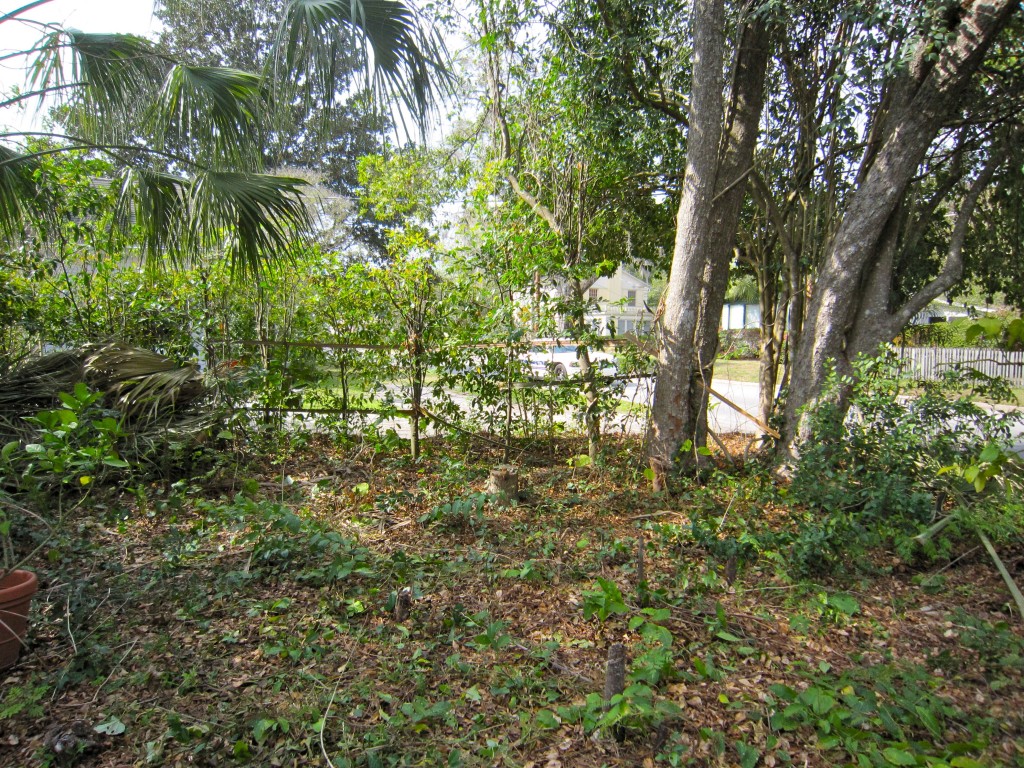 Simmy is a sighthound who, when he is not playing dress-up, loves to be outside in the garden.
Simmy is a sighthound who, when he is not playing dress-up, loves to be outside in the garden. Since he can’t chase what he sees at a distance, he barks his fool head off at anyone passing by. His job of announcing all the neighborhood comings and goings is stressing him out, and wearing thin my patience. He simply doesn’t need to bark so much. A visual screen blocking a view of distant dogwalkers will help solve the problem, I think, but a privacy fence is not allowed in our historic neighborhood. I turn, happily, to a large clump of bamboo growing in our yard: I need it to build my fence, and it is badly in need of trimming and thinning.
Since he can’t chase what he sees at a distance, he barks his fool head off at anyone passing by. His job of announcing all the neighborhood comings and goings is stressing him out, and wearing thin my patience. He simply doesn’t need to bark so much. A visual screen blocking a view of distant dogwalkers will help solve the problem, I think, but a privacy fence is not allowed in our historic neighborhood. I turn, happily, to a large clump of bamboo growing in our yard: I need it to build my fence, and it is badly in need of trimming and thinning.
I do *heart* bamboo. So much so that I want to surround myself with it. It grows fast and free in Florida. The strong, lightweight plant is so versatile it has been put to use around the world as piping, scaffolding, flooring, exterior walls, curtain rods, clothing, utensils, and, of course, fencing. On my first trip to Hawaii I fell in love with the grasses’ tall green culms as I scrambled through a grove growing high on a mountainside. It grows in many forms across the U.S., and in sunny Florida it is possible to grow many of the larger varieties. We have four or five types. (Our neighbor planted the impressive timber variety, and I welcome its potential to spread into our yard.):
The prolific grass grows so fast that hyperbole is not even required to describe its pace: You can practically watch the grass grow. Which just means you’ll be able to cut it down and turn it into a fence that much sooner.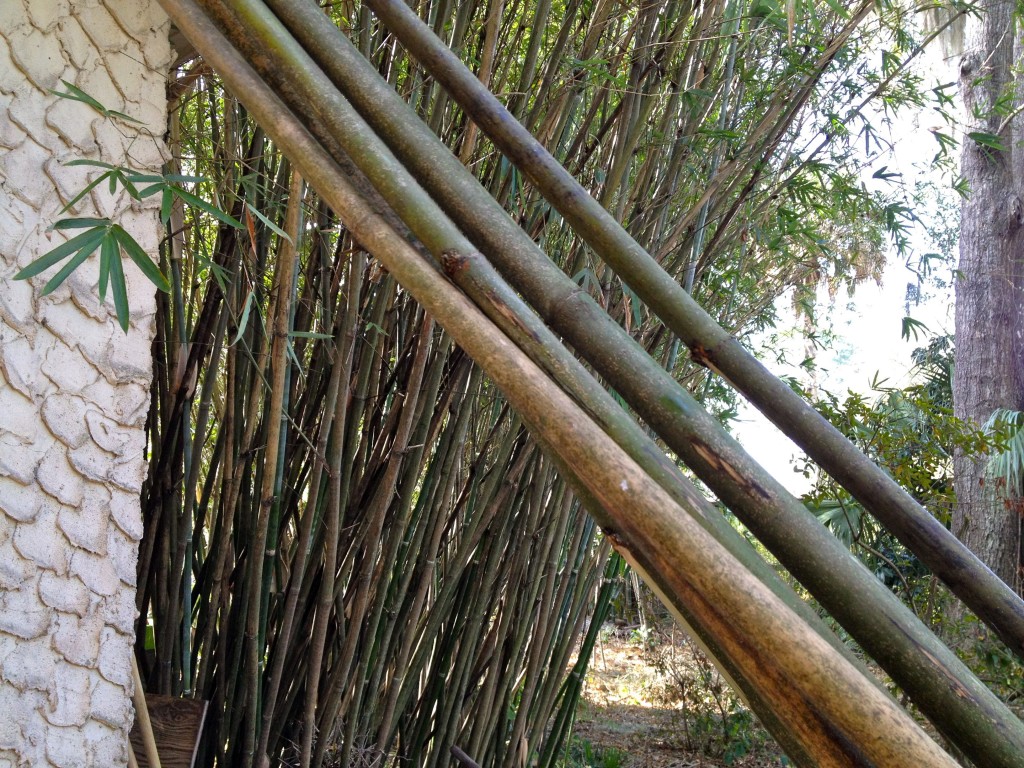
I searched the interwebs for info on how to build a bamboo fence and found little to guide me other than this article. I know there are books on the subject, but I didn’t want to research too much. I wanted to dive right in. This is how I roll.
The poles, which I harvest manually with a bear claw saw, are perfect for creating a fence made entirely out of items from my yard. The branches of Sabal palm leaves, wedged into the crotches of cherry laurels and secured with cable ties, make the cross beams: 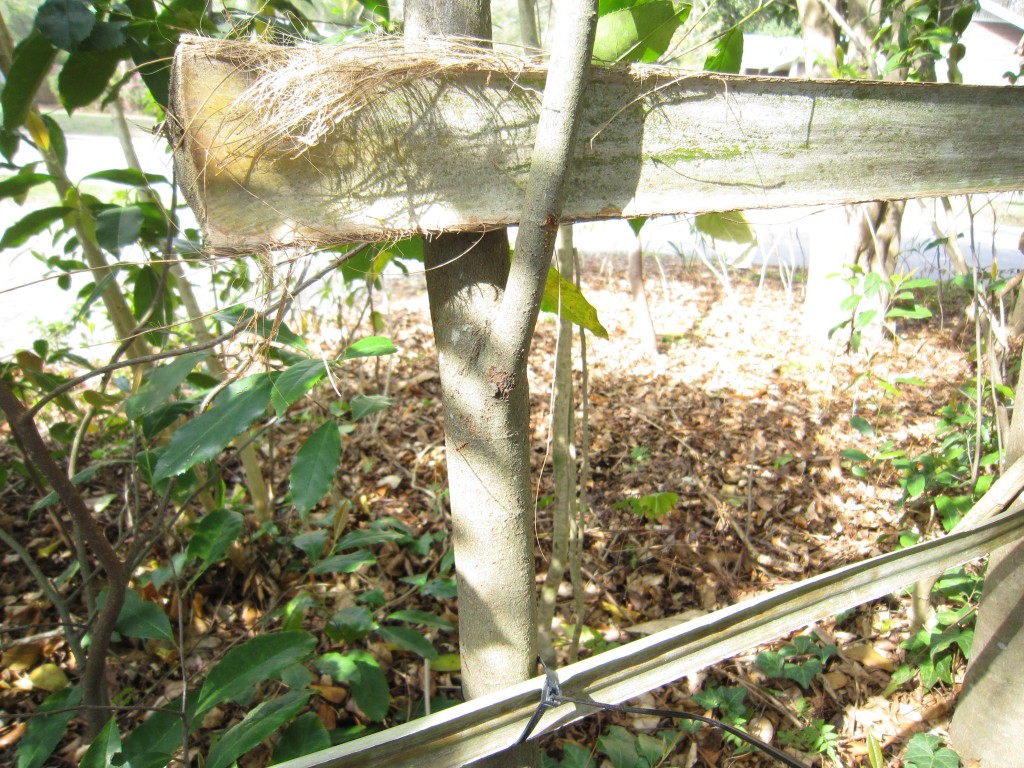
I learned how to pick which poles to cut (at least three years old). I gleaned it is important while making a fence “post” to trim the pole to height just above the node. That way the pole will not fill with rainwater and rot. I also learned there is a traditional black twine Japanese artisans use to fasten bamboo fence poles to cross beams. So I bought classy black cable ties to imitate this effect.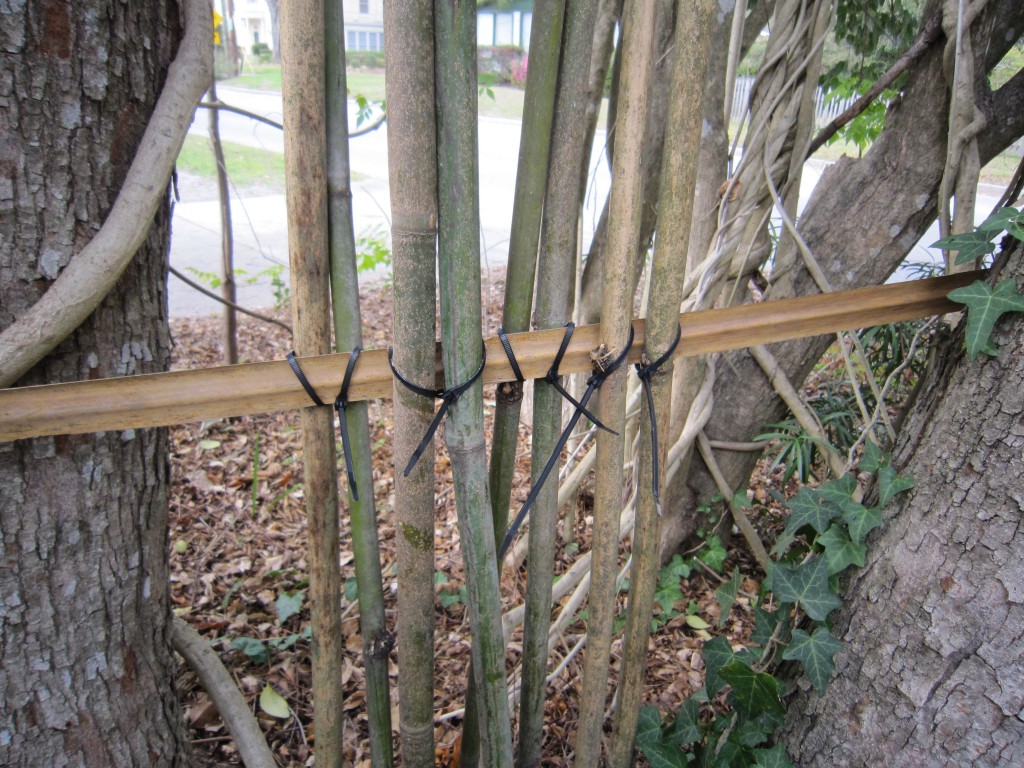
The fence is not finished yet. Cutting and trimming the poles is time consuming. I’ve been tied up with a sick child home from school, out-of-town visitors, and following up on some of the tasks required to get my must haves under control. Next Friday I hope to complete the panels on the west side of our property.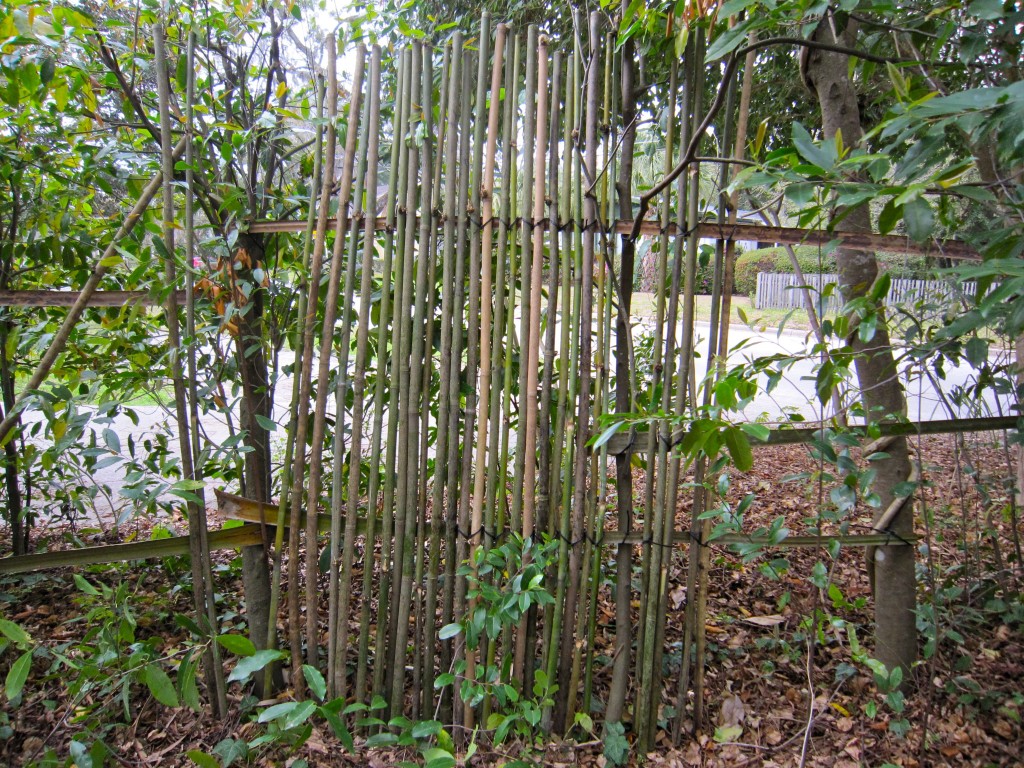
Then I’ll get to be more decorative and artistic with the panels on the north side’s temporary screen, which I began to build by incorporating potted plants and some metal poles I found in the garage. This screen looks silly at the moment because it is nothing more than the sketch of an idea of a fence. 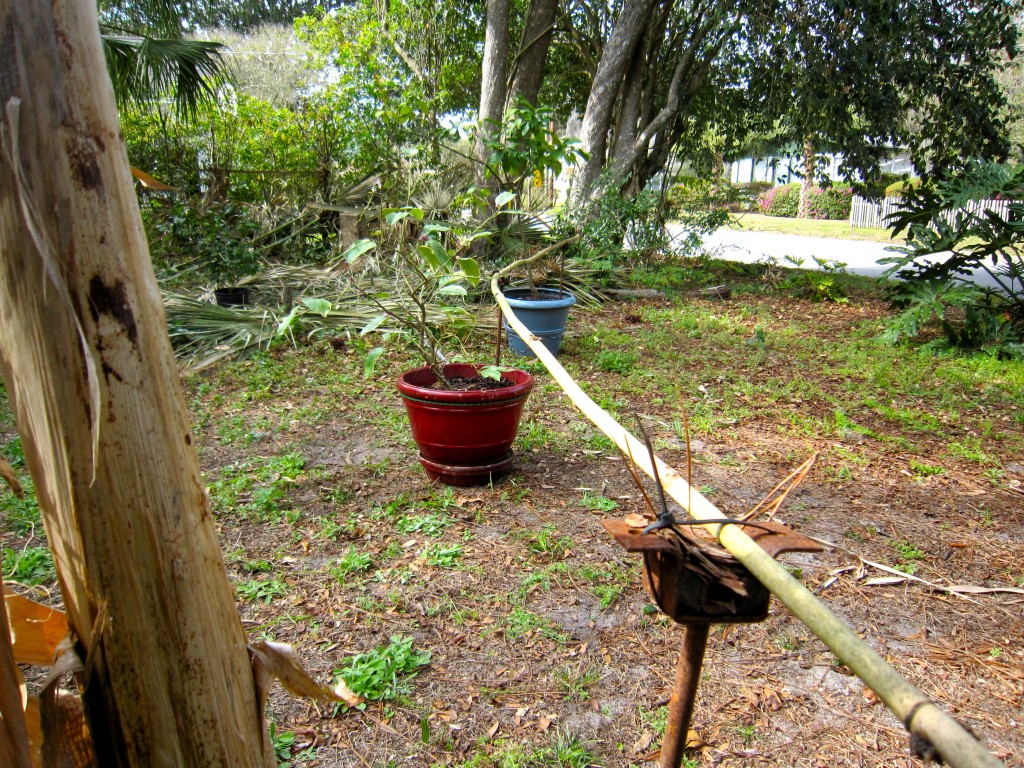
You, dear readers, (and my husband) will have to trust me when I say that when it is finished the fence will beautifully contain my daughter as well as calm my dog — all without having to deal with city codes. I will also be able to remove it in a hurry, if required.The total price of this natural wonder, excluding time, is about $20 for cable ties.
As we wind down Frugal February, that sounds just about right to me.

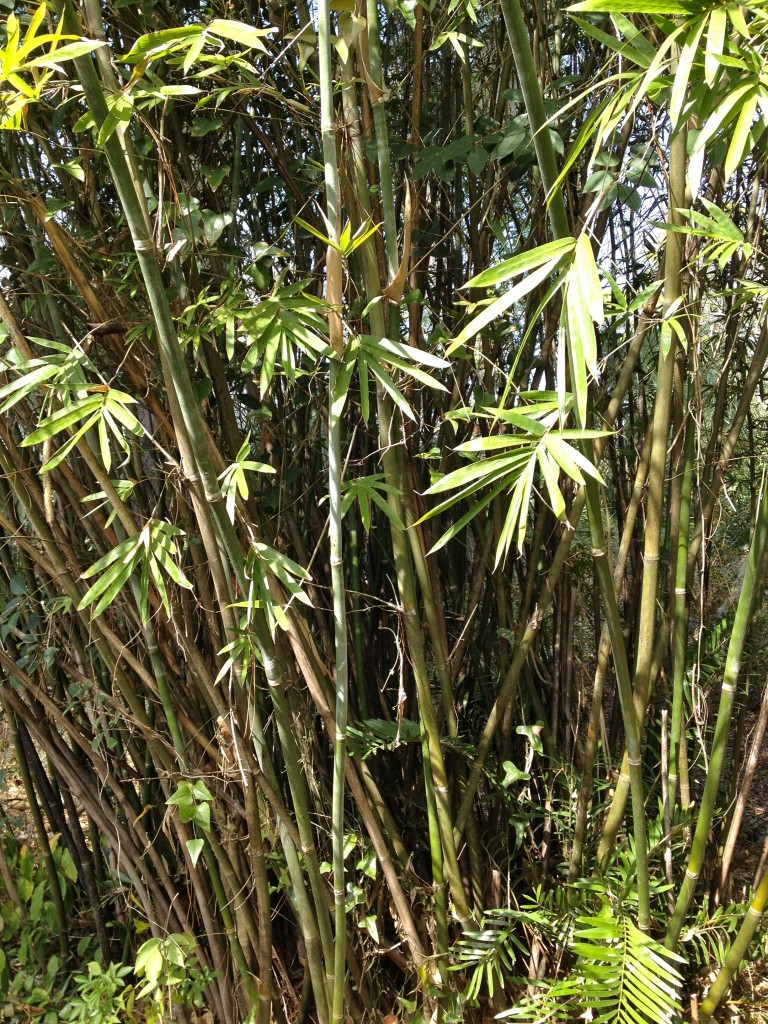
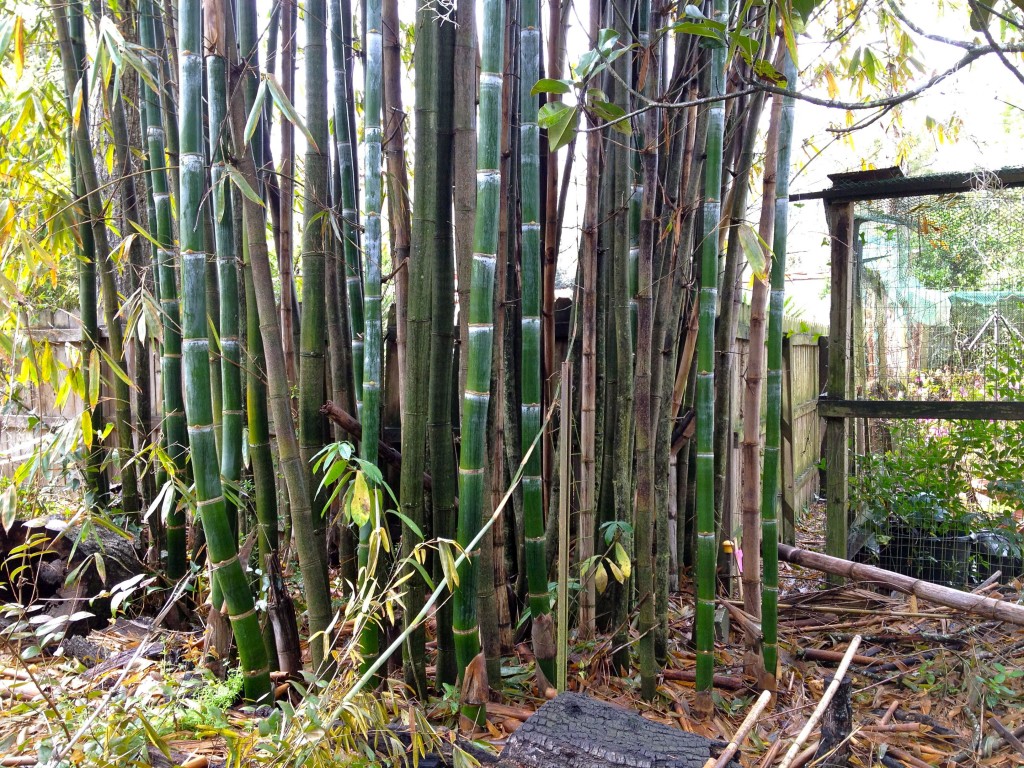
Looks sooo awesome! İ have an abundance of lady palms if you want more green! (trying to lure you to my backyard…)